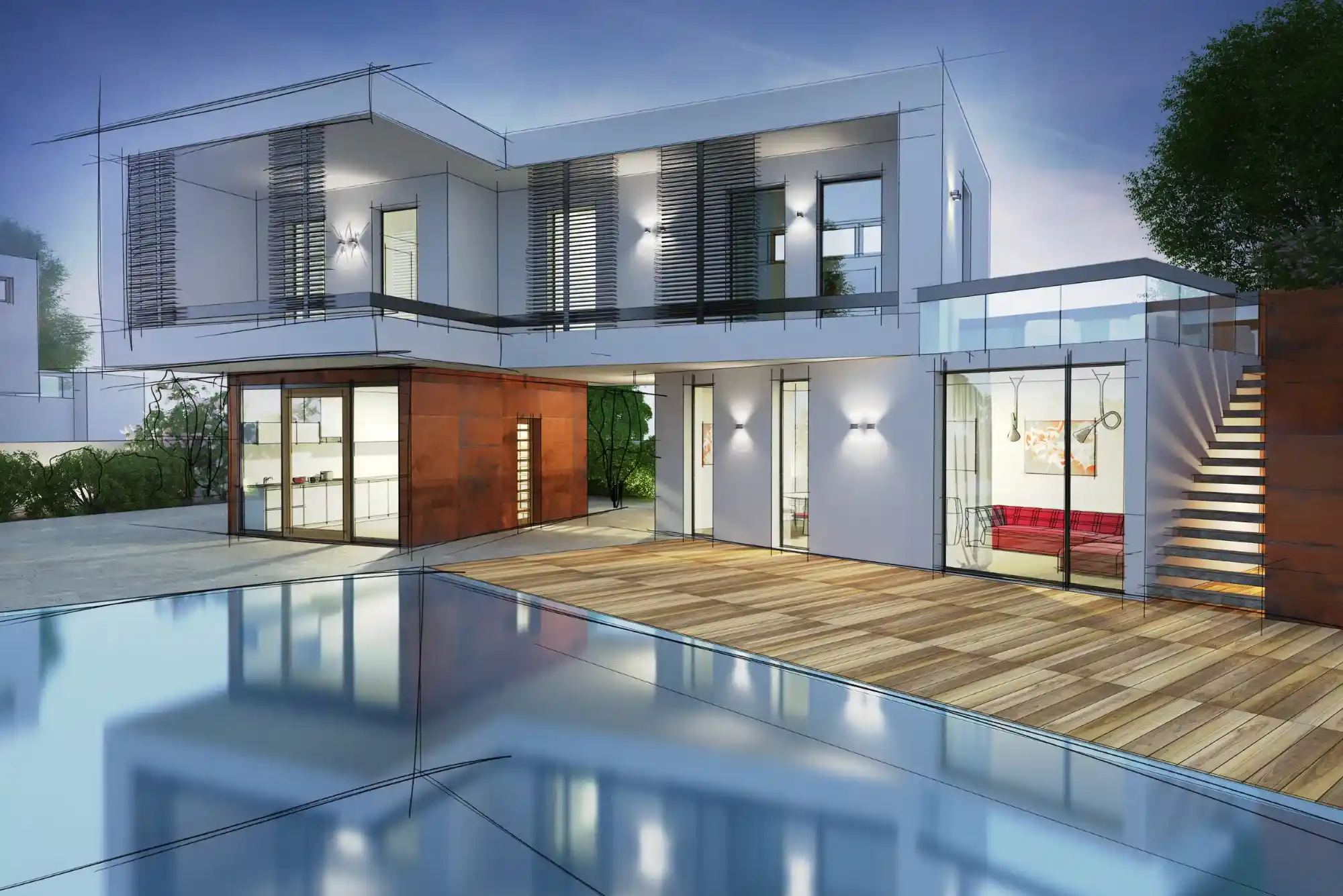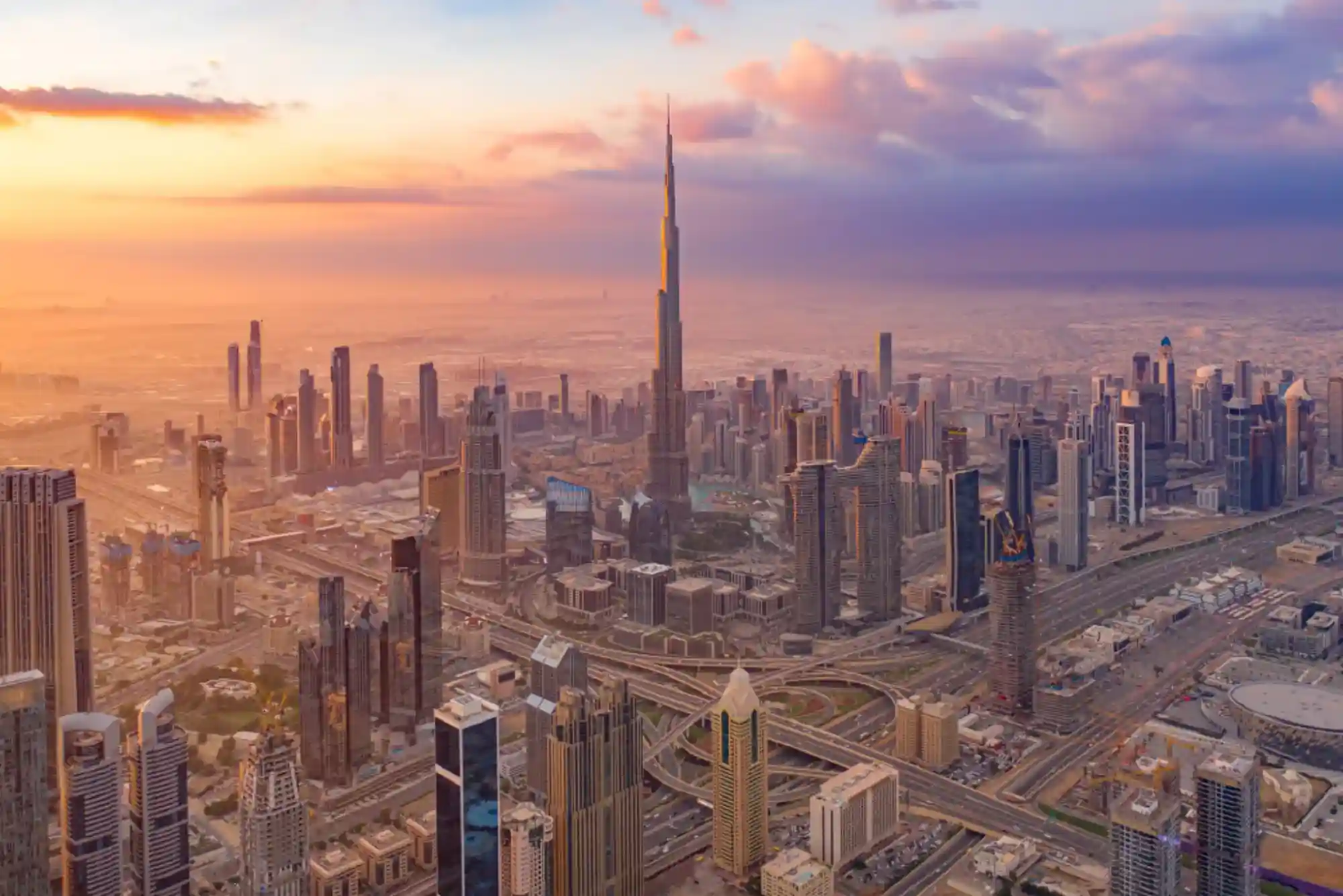Why Dubai is the Epitome of Luxury Living
Dubai has long been synonymous with opulence, glamour, and futuristic innovation. When it comes to Dubai villa design, the city doesn’t just follow global trends—it sets them. With its tax-free status, high standard of living, and strategic location as a global business hub, Dubai attracts some of the world’s wealthiest individuals. These high-net-worth residents demand homes that are more than just places to live—they’re status symbols, sanctuaries, and smart spaces that blend art with architecture. Dubai’s skyline may be dominated by high-rise towers, but in its suburbs and waterfronts lie some of the most magnificent villas in the world. These homes are designed not only to reflect affluence but also to support a lifestyle of leisure, wellness, and social prestige.
What makes Dubai even more exceptional is the sheer variety it offers. Whether it’s a beachfront villa with panoramic sea views or a mansion tucked within lush golf course communities, every design is bespoke. Developers and homeowners are unafraid to experiment, combining traditional Middle Eastern aesthetics with contemporary minimalism or Mediterranean charm. In short, villa design in Dubai is all about expressing individuality without compromising on luxury.
Understanding the Unique Aesthetic of Dubai Villas
Dubai villas are a visual feast. Think grand entrances, soaring ceilings, ornate carvings, and flawless symmetry. But while they often reflect luxury and splendor, their design also considers climate, culture, and lifestyle. For instance, many villas are built with thick insulated walls and floor-to-ceiling windows with UV protection to cope with the intense desert sun. There’s a preference for cool color palettes—think beige, white, and pastels—to reflect heat and keep interiors light and breezy.
Inside, you’ll find interiors that ooze sophistication—Italian marble floors, hand-woven Persian rugs, crystal chandeliers, and designer furniture. Many villas include private elevators, multiple kitchens (for both show and service use), and state-of-the-art entertainment areas. It’s not uncommon to walk into a villa where the scent of Oud greets you at the door, diffused through a smart home scenting system that syncs with lighting and music for a multi-sensory welcome.
But perhaps what stands out the most is the seamless fusion of tradition and modernity. Elements like Arabic arches, Mashrabiya screens, and Majlis rooms often coexist with futuristic smart home systems, giving each villa a unique character that is both respectful of heritage and aligned with global design standards.
Architectural Styles Dominating Dubai Villas
Contemporary Minimalist Villas
Clean lines, neutral tones, and a “less-is-more” philosophy define the contemporary minimalist villa—a style that has taken Dubai by storm. These villas often feature expansive glass facades, open floor plans, and uncluttered interiors. The architecture emphasizes function over ornamentation, with every piece of furniture or décor element chosen for its utility and aesthetic value. Materials like polished concrete, natural stone, and wood are commonly used, not only for their durability but also for their ability to create a soothing, elegant environment.
The appeal of minimalist design lies in its timelessness. It caters to those who prefer serene spaces and value privacy and clarity. In Dubai, where the climate encourages indoor-outdoor living, minimalist villas often include wide sliding glass doors that open onto terraces, infinity pools, and zen gardens, blurring the line between inside and out. Moreover, minimalist designs are ideal for incorporating cutting-edge smart home technologies, making them perfect for tech-savvy homeowners who desire luxury without the fuss.
These homes often come with hidden storage solutions, recessed lighting, and integrated appliances to maintain the sleek aesthetic. While they may appear simple at first glance, minimalist villas in Dubai are meticulously curated spaces where every detail—from the shape of a doorknob to the placement of a skylight—has been thoughtfully designed.
Mediterranean and Andalusian Influences
Many of Dubai’s most charming villas are inspired by the warmth and romance of the Mediterranean. With red-tiled roofs, stucco walls, wrought iron balconies, and lush courtyards, these homes exude rustic elegance. Think of long verandas, arched doorways, and textured finishes that mimic sun-drenched homes found in coastal Spain, southern Italy, or the south of France. Mediterranean villas often make the most of Dubai’s sunny weather by incorporating al fresco dining areas, rooftop lounges, and shaded pergolas.
The Andalusian touch, particularly, adds a cultural layer—ornate tiles, hand-painted murals, and intricately patterned mosaics are popular design elements. Interior spaces are usually more closed-off compared to the open floor plans of contemporary styles, but they compensate with cozy, intimate corners that encourage social gatherings and relaxation.
These villas are often set in leafy communities like Arabian Ranches or Jumeirah Golf Estates, where lush greenery contrasts with the earthy tones of the architecture. The design philosophy here is centered around harmony, comfort, and visual richness—making these homes perfect for families who want their space to be both functional and full of character.
Traditional Arabic and Islamic Architecture
Traditional Arabic architecture continues to influence villa design in Dubai, especially among homeowners who value cultural authenticity. These homes typically feature courtyards, wind towers (Barjeel), domes, and archways—architectural elements that are not only beautiful but also practical in the harsh desert climate. Courtyards serve as cooling hubs, while thick walls and small windows reduce heat gain.
Inside, these villas are richly decorated with Islamic geometric patterns, calligraphy, and custom woodwork. Rooms like the Majlis are integral, offering a formal space to entertain guests in keeping with local customs. High ceilings, lantern-style lighting, and mosaic tilework further contribute to the regal ambiance.
Such designs often incorporate sustainable practices rooted in tradition. For instance, the use of natural ventilation and shaded corridors enhances energy efficiency. These villas are usually found in older, more established neighborhoods or within themed developments that aim to preserve the region’s heritage.
These homes are not just about visual appeal—they’re deeply symbolic. Every design decision, from the direction a room faces to the color of the walls, can carry cultural or spiritual significance. It’s a style that reflects pride in heritage while still embracing the comforts of modern living.
Use of Premium Materials and Finishes
When it comes to finishes in Dubai villas, compromise is not in the vocabulary. Whether you’re walking on Italian Carrara marble or brushing against velvet-paneled walls, the choice of materials screams opulence. Dubai’s luxury villas are a showcase of high-end textures, from onyx countertops to Swarovski-studded chandeliers. The philosophy? Every surface you touch, see, or walk on should reflect affluence and quality.
What makes this even more exciting is the global palette of materials used—French oak floors, Brazilian granite, Turkish travertine, and Moroccan tiles all come together to form a unique, global fusion. The finishes aren’t just beautiful—they’re also durable. Given Dubai’s climate, materials are selected not only for their look but for their performance under high temperatures and humidity levels.
Wooden accents are often used to add warmth to contemporary spaces. Engineered wood, especially in custom millwork or cabinetry, offers a sophisticated contrast to cooler materials like marble and stone. Metallic finishes—brushed gold, copper, or stainless steel—are used in light fixtures, stair railings, and hardware to add a layer of richness without being overwhelming.
The importance of custom finishes also can’t be overstated. Many villas feature bespoke details—whether it’s a handcrafted mosaic in the foyer or a laser-cut metal screen separating rooms. These one-of-a-kind elements offer personalization, transforming a luxurious home into a unique living experience.
Smart Home Integration and Automation
Smart technology has completely revolutionized how people live in Dubai villas. Today’s elite homeowners expect seamless control over everything—from lighting and climate to security and entertainment—right from their smartphones or voice-activated devices. Automation systems are now considered essential, not optional, for any high-end villa design.
Home automation in Dubai often starts with a central control hub that manages lighting scenes, temperature, and curtain operations. Imagine pressing a single button to dim the lights, lower the shades, turn on ambient music, and adjust your AC to the perfect level—without moving from your bed. That’s the level of convenience residents in Dubai expect.
Security features are top-notch too. Facial recognition, fingerprint access, AI surveillance systems, and remote-controlled gates provide peace of mind in a city known for its high standard of safety. It’s not just about keeping intruders out—it’s about creating a completely personalized experience inside. Your villa can recognize who you are and adjust settings to match your mood, time of day, or even weather conditions.
Even more fascinating is how these smart systems integrate with sustainability goals. Motion sensors, automated irrigation systems, and smart thermostats reduce energy consumption without compromising comfort. The future of villa living in Dubai is intelligent, intuitive, and incredibly luxurious—all thanks to advanced technology that works quietly behind the scenes to elevate daily life.
Outdoor Living and Landscaping Trends
Infinity Pools and Water Features
Water is a symbol of life and luxury in the Middle East, and in Dubai, it takes center stage in villa design. Infinity pools are practically a must-have for high-end properties, not just for their visual appeal but for the way they embody indulgence and tranquility. Positioned to blend seamlessly with the horizon—be it desert dunes or ocean views—infinity pools in Dubai are engineering marvels wrapped in aesthetic beauty.
Designers go beyond just the pool. Many villas incorporate cascading waterfalls, submerged sunbeds, and swim-up bars to transform a backyard into a full-fledged resort. LED lighting systems turn the pool into a glowing centerpiece at night, perfect for hosting events or simply enjoying a private midnight swim.
Complementing these water features are jacuzzis, misting systems, and custom-built saunas or hammams. Some even integrate glass walls into the pool’s edge or install underwater sound systems for an immersive experience. And let’s not forget about the landscaping around it—lush palm trees, stone pathways, and fire pits turn the space into a personal oasis.
What’s remarkable is how these features are adapted to the climate. Pools are often equipped with chilling systems to keep water temperatures comfortable during the scorching summer months. With such attention to detail, outdoor spaces in Dubai aren’t just add-ons—they’re integral parts of villa living, crafted with the same care as interiors.
Majlis and Courtyard Concepts
The concept of the Majlis—an Arabic term for a sitting place—is deeply rooted in Emirati culture and plays a key role in villa design. Traditionally used to host guests, the Majlis is a semi-formal space often located near the entrance, separated from the private family quarters. In modern villas, the Majlis has evolved into a design focal point, blending cultural significance with modern aesthetics.
Many homes feature both an indoor and an outdoor Majlis. The indoor version is typically adorned with luxurious furnishings, ornate patterns, and rich fabrics—inviting yet impressive. Outdoor Majlis areas are even more enchanting, often positioned around a central courtyard with water features, ambient lighting, and comfortable seating, all shaded by pergolas or retractable canopies.
Courtyards are another defining element. Drawing from traditional Islamic architecture, they offer privacy while facilitating airflow and light into the surrounding rooms. These spaces often feature lush gardens, tiled fountains, and mosaic walkways, creating a calm and reflective atmosphere. In some homes, the courtyard is even the heart of the villa, around which the rest of the home is designed.
Both Majlis and courtyard elements show how cultural tradition can enhance modern luxury. They foster hospitality, privacy, and comfort while enriching the villa’s aesthetic and functional appeal. In Dubai, where hospitality is a cultural cornerstone, these spaces are not just optional—they’re essential.
Designing for Functionality and Family Living
Kid-Friendly Spaces and Play Areas
Dubai villas aren’t just built for style—they’re designed for the people who live in them, including families with young children. Kid-friendly design is a key component of many villas, seamlessly blending safety, fun, and aesthetics. Forget cramped playrooms tucked in a corner; today’s family-focused villas in Dubai include entire floors or wings dedicated to children.
These spaces are often brightly colored, filled with natural light, and designed to stimulate creativity and learning. Custom-built furniture, soft flooring, and interactive wall features—like chalkboards, pegboards, or magnetic panels—transform these rooms into mini adventure zones. Many homes even integrate indoor slides, reading nooks, or small stage areas for performance play.
Safety is always a priority. That means soft-closing doors, anti-slip tiles, rounded furniture edges, and baby gates at stairs. Parents can also monitor kids through integrated security cameras or smart systems linked to their phones, giving peace of mind while allowing children a degree of independence.
Outdoor play areas are equally impressive. We’re talking about jungle gyms, splash pads, sandpits, and even miniature sports courts. With the weather in mind, many of these outdoor zones are shaded and equipped with cooling fans or misting systems.
Incorporating kid-friendly spaces doesn’t mean sacrificing luxury or design cohesion. In fact, many villas use the same premium finishes and architectural elegance in children’s areas, creating a home that’s as chic as it is child-centric.
Multi-Generational Living Layouts
In Dubai, it’s common for extended families to live together under one roof. As such, multi-generational layouts are becoming increasingly popular in villa design. These layouts are all about creating privacy and independence while still keeping families close—think of it as one home with multiple functional zones.
A well-designed multi-gen villa typically includes separate entrances or wings for grandparents, guest suites with attached pantries or lounges, and dual kitchens—one for formal occasions and another for everyday use. These features allow for autonomy and comfort while maintaining a shared living experience.
Soundproofing is essential in these homes. Whether it’s placing thick partitions, using acoustic insulation, or strategically locating bedrooms away from entertainment zones, noise control ensures peaceful cohabitation. Ensuite bathrooms, private balconies, and small dining or living spaces in the secondary wings add to the convenience.
Accessibility is another key factor. Elevators, wide doorways, and ramps may be integrated for older family members. Some villas even include medical rooms or quarters for live-in help, reflecting the premium healthcare needs of larger families.
This kind of thoughtful design doesn’t just cater to practicality—it reflects the cultural values of family, respect, and togetherness, which are deeply embedded in Emirati life and Dubai’s multicultural society.
FAQs
1. What is the average cost to design a villa in Dubai?
Depending on size, materials, and customization, designing a villa can range from AED 500 to AED 1,500 per square foot. High-end luxury villas may cost significantly more.
2. Can foreigners own villas in Dubai?
Yes, foreigners can own villas in designated freehold areas such as Palm Jumeirah, Dubai Hills Estate, and Emirates Hills with full ownership rights.
3. How long does it take to build a villa in Dubai?
Typically, it takes between 12 to 24 months for a custom villa, depending on design complexity, approvals, and construction speed.
4. Which design style is most popular for Dubai villas?
Contemporary and Mediterranean styles are trending, but traditional Arabic architecture remains popular among culturally inclined homeowners.
5. Are smart home features worth the investment in Dubai villas?
Absolutely. Smart features increase convenience, security, energy efficiency, and overall property value—especially in a tech-forward market like Dubai.
Price publication: 438.06 UAH
Total: 438.06 UAH




